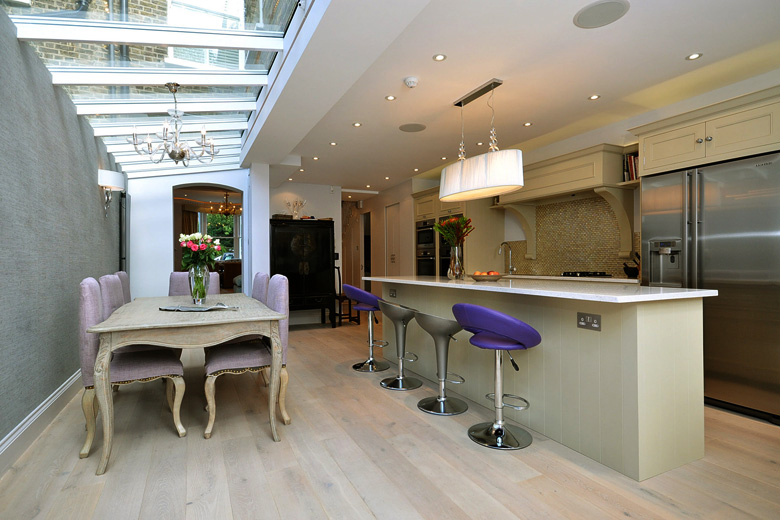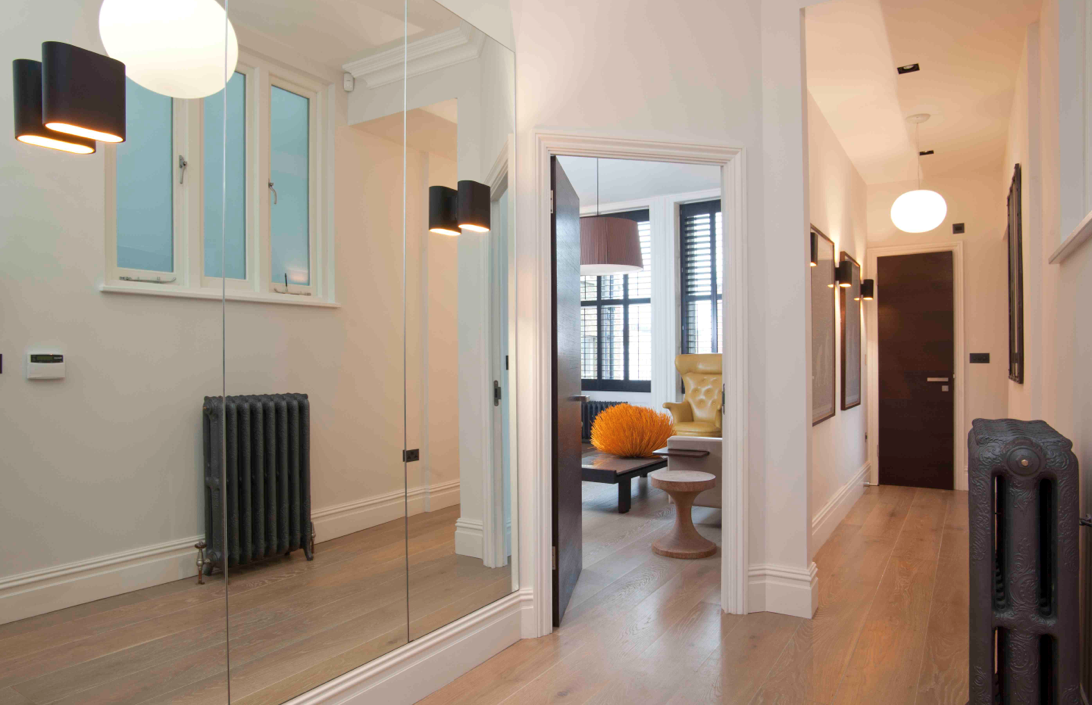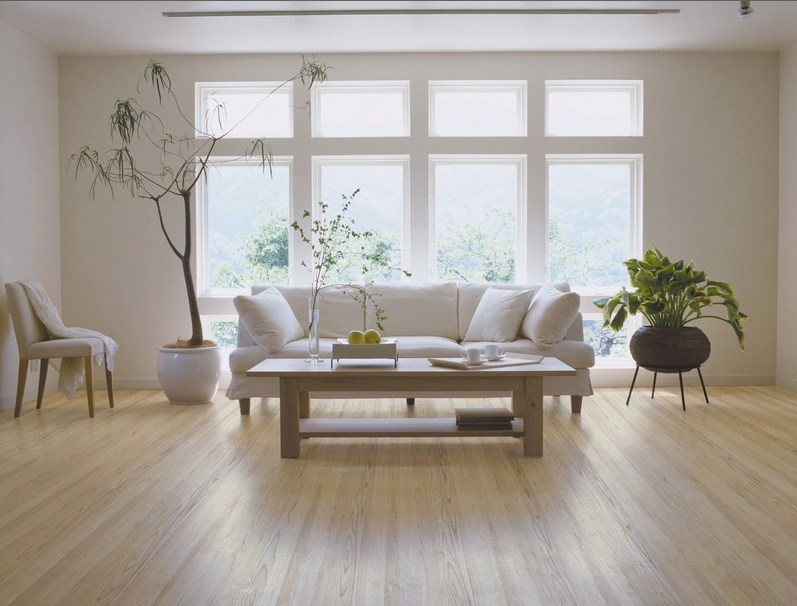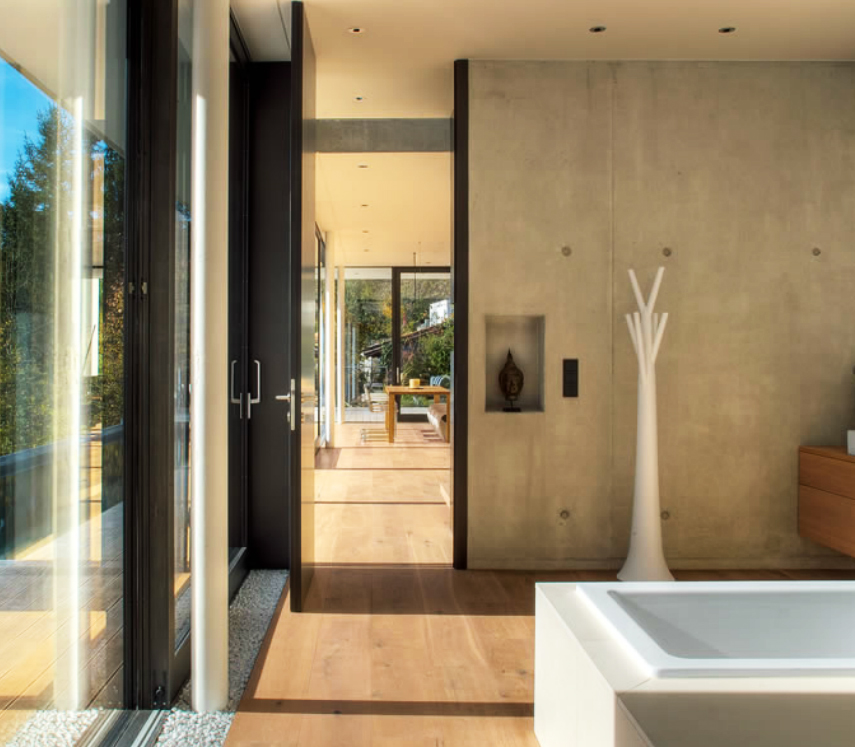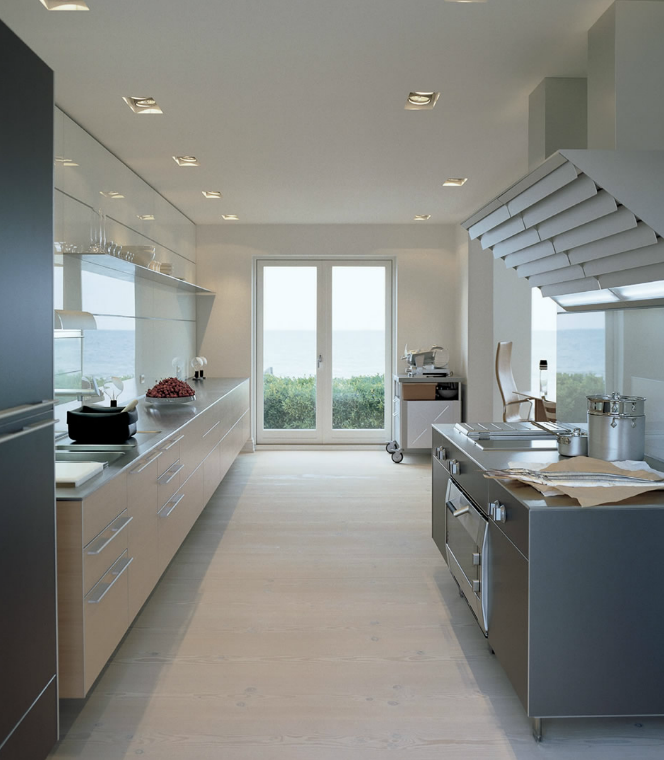Wide plank wooden flooring
For larger rooms, the wider the planks, the more striking the floor can look. And wood from sustainable forests, or reclaimed wood, are good choices for the eco-minded, nature-loving home-owner

Wood, while it can be expensive, remains the flooring of choice for many people because it's natural, ages well and has a warm, welcoming feel to it. Wider planks are in vogue for bigger rooms such as kitchen/diners because they give a cleaner look and a sense of expanse. Pictured above: this bedroom looks impresive in these wideboard Harlech Raw Oak planks from Woodpecker Flooring, 24cm width
For actor Danny Sapani wooden flooring is a must - he and his wife are renting a house at the moment and the wooden flooring 'is just so wonderful' that it's stopping them looking for somewhere to buy. For London film studies lecturer Kate Iles, wood is not only the most beautiful flooring but the most hygienic.
For Totnes teacher Alex Moore and partner Victoria, the wooden flooring they put into their flat is something they don't regret, even though the cost of it nearly bankrupted them.
A straw poll of a few people known to the Deco team, but it suggests that high quality wooden flooring is something to be prized.
Why do they like it? They each say they like the fact that trees are sustainable and wood is natural, that it looks beautiful, is warm underfoot, that it ages well and doesn't need much loooking after. Wide or thin planks? They'd all go for wide, given the option.
How wide is wide?
According to Ecora and The Natural Wood Floor Company, the average width of a plank is 18cm, and planks are are considered to enter the 'wide' category when they're over 22cm. Be aware that wide boards will be engineered, not solid, because when planks get to over 20cm wide, they start to cup or banana, so to speak.
For boards of spectacular width - and you will need a large dwelling to justify them - Element7 can supply in widths of up to 85cms. And Danish company Dinesen has beautiful wide planks in Douglas fir or oak, which again, are premium products.
For tiny rooms, stick with boards 18cm wide, but a small-ish room, say 10ft by 12ft, if it has a high ceiling, can take 22-24cm width planks, advises Ecora.
Siberian Floors and Turgon Flooring, like Ecora, can supply planks up to 30cms wide, while The Natural Wood Floor Company's widest planks are 24cms.
What are engineered boards?
For anyone not clear about the difference between engineered and solid wood floors, engineered boards are made using a three-layer construction of plywood (or MDF) with the hardwood veneer (say oak or walnut) on the top.
They are much more stable than solid planks, which invariably continue to contract and expand after being fitted. Engineered boards can be made in widths not possible in solid floors, once down they won't move, and they're by far the best choice if you're having underfloor heating. Element7 guarantees its engineered floors for 25 years, so confident is it that they won't shift, warp, bend or bow.
Check the provenance of your wood
Turgon Flooring in south-west London sources its wood from mills in the Ukraine where forests are managed and trees are abundant. It makes the point that most wood used by reputable companies while not always FSC or PEFC-certified, does come from managed forests, especially if the wood is sourced in EU countries, where there are far more stringent rules around the felling of timber than in, say, the Far East.
However, if you want to know that your wood is legit, so to speak, you may want to seek out FSC/PEFC-certified wood flooring from suppliers. They include the big Scandinanvian players Kahrs and British company Element 7, which specialises in high-end engineered wide plank flooring.
Siberian Floors is new to the UK and its solid and engineered planks from Russia are FSC-certified, while less swanky than the latter two brands, Wood and Beyond offers FSC-certified solid and engineered oak or walnut planks in various widths. And The Natural Wood Floor Company, which has its own saw mill in Romania, uses European woods from FSC-certified forests.
If you can spare the time and you want your wood from the UK, you could do what architect-trained interior design Charlie Luxton did when he needed flooring for his Oxfordshire home: he went to Scotland to find a mill that used local sustainable elm, told them the dimensions of the planks needed and he arranged for them to be transported to his house.
Falkirk Wood in central Scotland is a good place to start, as they deal with local woods felled in accordance with Forestry Commission rules. Tell them what you want, and they'll advise accordingly.
Jago Anderson, sales director at Element7, says wider planks are increasingly popular with homeowners because they give a cleaner, more sophisticated look, and they are particularly effective in open-plan areas or to give a seamless, coherent feel to a ground floor, for example. 'And wider planks do look more modern,' he says.
Clearly the finish of your wood determines its look and character and there's been a concerted move away from strong shiny lacquers, to woods that are oiled, whether light or dark timbers are used. The white 'limed' finish is also very attractive for oak planks, as are 'fumed' or smoked woods.
'What you don't want with wooden flooring is for a totally uniform colour under a high shine,' says interior designer Paul Warren, who likes to use oils from Osmo for wood floors, which are low-VOC and based on vegetable oils and waxes.
Ecora do point out that with certain special finishes for which chemicals are needed, the wood flooring can't be sold as, in their case, PEFC-certified, because the view is taken that the chemicals detract from the natural, sustainability of the wood. So if you do go for an elaborate finish or colour that isn't found in nature, check with the provider what chemicals they use to achieve it.
Wide planks cost more
As they have to be engineered to achieve greater widths, it won't come as surprise to learn that the wider the board, the more expensive it will be. A lot of factors affect the price of your planks, but very roughly, Siberian Floors says its lowest priced planks, 18cm wide, start at £56 m2, and the same plank translated to 30cm width would be £85 m2.
FSC-Fairtrade wood from Kährs
If you've ever wondered if there's such a thing as fair trade wood, Kährs last year launched what's understood to be the world's first range of flooring made from FSC Fairtrade-certified wood.
It's being produced as part of the first FSC-Fairtrade-certified small-scale forestry project in Chile’s Curacautin Valley, which aims to restore biodiversity in the forest and reduce poverty amomng the the indigenous Mapuche people.
Made from a combination of sustainable native Rauli and Roble hardwood timber, Kahrs' new range of two-strip floors - part of its World Collection - features the company's multi-layer construction and glueless Woodloc® joint. The floor surface is made from 100 per cent FSC-Fairtrade certified wood while FSC Mix certified wood is used for the core layers.
Designs include: Roja – an even grained floor with a warm, red tone and lots of colour variation; Tierra - a rich, dark brown stained floor with a more even tone and subtle colour variation; Piedra - a grey toned floor for a modern, urban look, and Cautin, with bold colour variation and warm natural hue.
